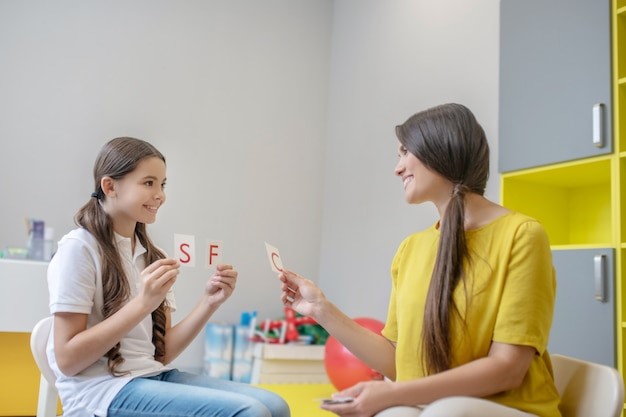Communication is a fundamental aspect of human interaction, shaping relationships, facilitating learning, and enabling participation in society. However, for individuals with communication disorders, expressing thoughts, feelings, and needs can be a daunting challenge.
Among the diverse approaches within speech therapy, cluster speech therapy shines as a beacon of hope, providing targeted interventions to enhance speech clarity and intelligibility. In this article, we embark on a journey to explore the profound impact of cluster speech therapy in the realm of rehabilitation.
Understanding Cluster Speech Therapy
Clusters speech therapy is rooted in the understanding that speech disorders often manifest in specific clusters of sounds, where individuals struggle to articulate combinations of consonants.
These clusters, such as /st/, /bl/, or /tr/, present unique challenges due to the intricate coordination required for their accurate production. Unlike traditional speech therapy approaches that may focus on isolated sounds, cluster speech therapy takes a holistic view, aiming to refine overall speech production and fluency.
Role of Cluster Speech Therapy in Rehabilitation
Targeted Intervention: One of the hallmark features of cluster speech therapy is its personalized approach. Therapists conduct comprehensive assessments to identify the specific clusters that pose challenges for each individual.
Armed with this knowledge, they design therapy sessions tailored to address the unique needs of their clients. This targeted intervention ensures that therapy efforts are focused and efficient, maximizing the potential for improvement.
Improved Articulation: For individuals with speech disorders, articulating certain sounds within clusters can be particularly challenging. Whether it’s mastering the crispness of the /st/ sound or the fluidity of the /tr/ blend, cluster speech therapy offers a repertoire of exercises and drills designed to hone articulation precision.
Enhanced Intelligibility: Clear and intelligible speech is essential for effective communication. By addressing cluster sounds that often contribute to speech distortions and misunderstandings, cluster speech therapy enhances overall intelligibility.
As individuals gain mastery over challenging clusters, they can express themselves more confidently and effectively in various social, academic, and professional settings.
Naturalistic Practice: Cluster speech therapy places a strong emphasis on naturalistic practice, integrating functional activities and everyday communication scenarios into therapy sessions.
Whether it’s engaging in conversation, storytelling, or role-playing exercises, individuals have opportunities to apply newly acquired speech patterns in realistic contexts. This real-world practice not only reinforces learning but also builds confidence in using newly acquired skills outside the therapy setting.
Techniques in Cluster Speech Therapy
Cluster speech therapy employs a diverse array of techniques and strategies to target specific speech challenges:
Articulation Exercises: These exercises focus on strengthening the muscles involved in speech production and refining articulatory coordination. From repetitive production of target sounds within cluster contexts to tongue twisters that challenge tongue agility, these exercises are designed to promote accurate and fluent speech production.
Auditory Discrimination Tasks: Auditory discrimination tasks help individuals develop a keen ear for distinguishing between similar sounds within clusters. By honing their phonemic awareness and sound discrimination abilities, individuals can improve their ability to perceive and produce target sounds accurately.
Structured Practice: Structured practice activities involve systematic repetition of target sounds in various word positions and linguistic contexts. This structured approach allows individuals to consolidate their learning and generalize acquired skills to different speech contexts, promoting long-term retention and application.
Feedback and Reinforcement: Feedback and reinforcement play a pivotal role in cluster speech therapy. Therapists provide constructive feedback on speech production accuracy, highlighting areas of improvement and offering guidance for refinement. Positive reinforcement, in the form of praise and encouragement, motivates individuals to persist in their efforts and celebrate their progress along the way.
Expanding Horizons: Innovations
Innovations in technology and research are expanding the horizons of cluster speech therapy, opening up new possibilities for rehabilitation:
- Augmented Reality and Virtual Reality Applications: These immersive technologies create simulated environments where individuals can practice speech exercises in realistic scenarios, such as social interactions or public speaking settings.
- Biofeedback Systems: By monitoring physiological indicators during speech production, biofeedback systems provide individuals with real-time feedback on their articulatory movements and vocal parameters, enhancing awareness and control.
- Neuroplasticity-Based Approaches: Leveraging our understanding of the brain’s plasticity, these approaches target neural reorganization to enhance speech motor control and remediate speech disorders at the neurological level.
- Gamification and Gamified Learning Platforms: Interactive games and activities motivate individuals to engage in speech therapy exercises, making learning enjoyable and rewarding while tracking progress over time.
Global Perspectives: Cultural Competence
Cultural competence is integral to providing effective cluster speech therapy services to diverse populations:
- Cultural Sensitivity Training: Therapists undergo training to increase their awareness of cultural differences and develop strategies for providing culturally sensitive care.
- Language Access Services: Ensuring language access for individuals with limited English proficiency through qualified interpreters or bilingual therapists facilitates effective communication and enhances therapy outcomes.
- Collaborative Goal Setting: Engaging clients and their families in collaborative goal-setting processes that consider cultural values and priorities fosters a sense of ownership and promotes active participation in therapy.
Conclusion
Cluster speech therapy is more than just a treatment modality; it is a catalyst for transformation, empowerment, and inclusivity. By embracing a holistic approach that addresses the multifaceted aspects of communication, cluster speech therapy empowers individuals to reclaim their voices, connect with others, and navigate the world with newfound confidence and independence.
As we pioneer the future of communication rehabilitation, let us remain steadfast in our commitment to innovation, cultural competence, and evidence-based practice, ensuring that every individual has the opportunity to communicate with clarity, confidence, and dignity. Together, we can empower voices, transform lives, and shape a future where communication barriers are overcome, and every voice is heard.
